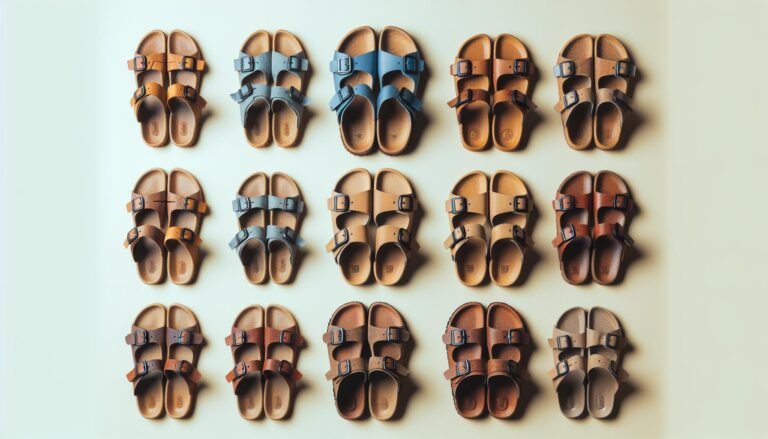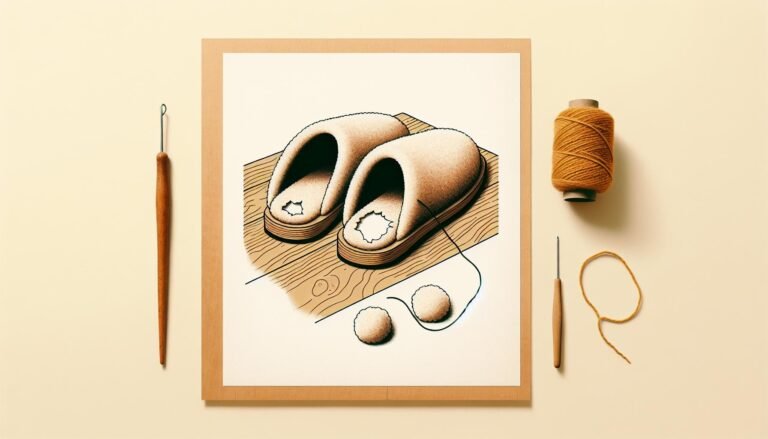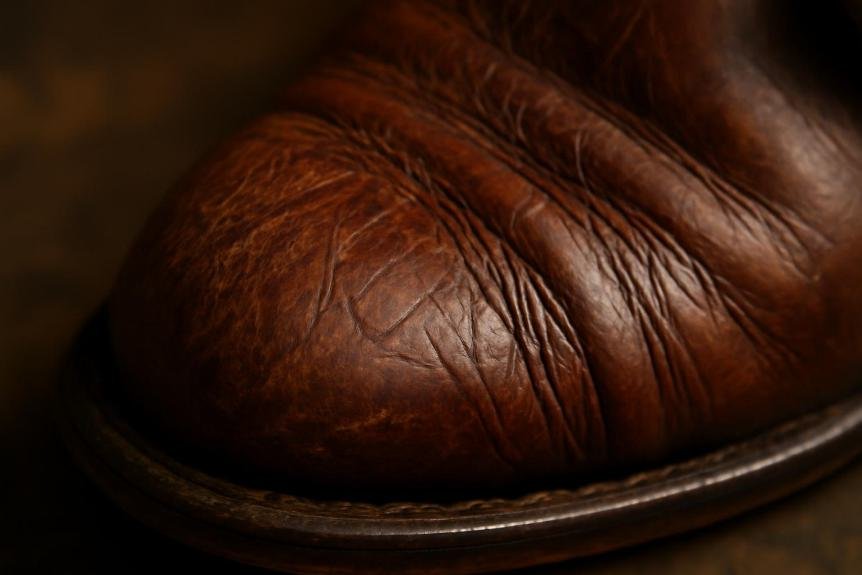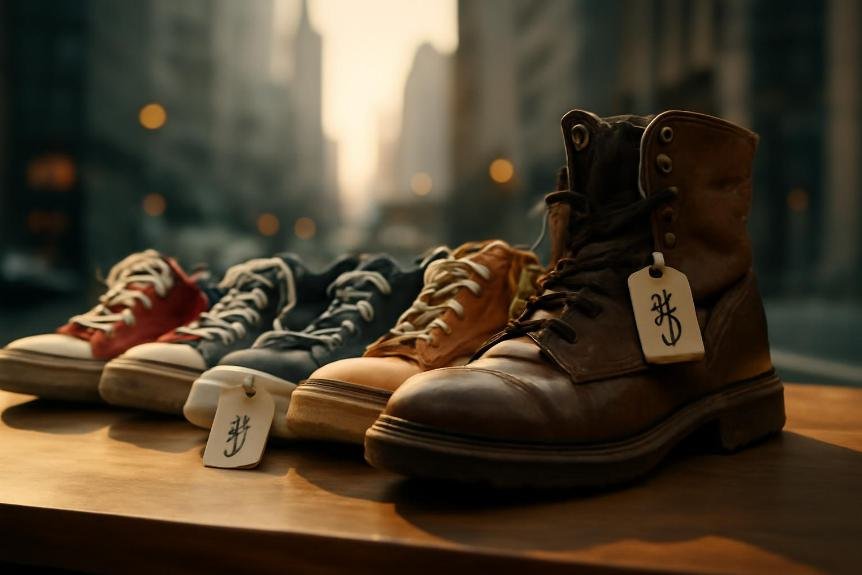Can Shoes Cause Knee Pain?
Have you ever wondered if your shoes could be the culprit behind your knee pain? It’s a question I get asked frequently, and the answer is yes, shoes can indeed contribute to discomfort in your knees and other parts of the body. The connection between footwear and pain isn’t always straightforward, but it’s crucial to understand how your choice of shoes impacts your overall health.
From the type of shoes you wear to the activities you engage in, several factors play into how shoes affect your body. Whether it’s the lack of support from flat shoes or the strain from high heels, getting to the root of shoe-related knee pain is essential. Let’s dive into how your footwear choices could be influencing your comfort and what you can do about it.
Key Takeaways
- Shoes significantly influence knee pain by affecting body weight distribution and joint alignment; choosing the right footwear is crucial for knee health.
- High heels, sandals, and flat shoes without proper support or cushioning are common culprits of knee pain due to their impact on natural foot movement and alignment.
- To protect knees, select shoes with adequate arch support, flexibility, sufficient cushioning, and a minimal to moderate heel drop to encourage natural foot posture and movement.
- Treatment for knee pain includes rest, ice, strengthening exercises, appropriate footwear, and professional help like physical therapy for persistent issues.
- Recognizing signs of a knee problem, such as decreased range of motion, swelling, pain, instability, and unusual noises, is essential for timely intervention and preventing further damage.
What do my shoes have to do with knee pain?

When I first started experiencing knee pain, I never imagined my shoes could be the culprit. But as I dove deeper into the matter, the connection became crystal clear. Shoes play a significant role in how we distribute our body weight when we walk or run. If the shoes don’t provide proper support, this can lead to imbalanced force distribution across the knee joint, which, over time, can induce or exacerbate knee pain.
One critical aspect I learned is that not all shoes are created equal when it comes to supporting our knees. For instance, high heels can be particularly harmful. Despite their fashion appeal, they dramatically alter the natural alignment of our body, placing excessive stress on our knees. It’s not just the stiletto types that are to blame, but any shoe with an elevated heel without proper mid and forefoot support can lead to trouble.
On the flip side, shoes designed with adequate arch support and a flexible sole can significantly mitigate knee discomfort. These shoes mimic our foot’s natural movement, promoting better alignment of the knee joints and reducing stress. This understanding pushed me to reassess not only my shoe choices but also the importance of foot health in relation to knee pain.
I’ve realized that our footwear choices can be a straightforward fix to a complex problem like knee pain. By selecting shoes that offer proper support and allow for natural foot movements, I’ve managed to keep my knee pain in check. This insight has been invaluable in maintaining not just my knee health, but my overall well-being. Whether it’s during a casual walk or a rigorous workout, making the right footwear choices has become a top priority for me.
In essence, understanding the profound impact shoes have on knee health has taught me the importance of being mindful about what I wear on my feet. It’s more than just a style statement; it’s about fostering better health and preventing future discomfort.
What shoes should I choose to protect my knees?
When it comes to protecting my knees, I’ve learned that not all shoes are created equal. The key is to find footwear that supports natural foot movement and alignment, which in turn can help alleviate unnecessary pressure on my knees. Over the years, I’ve gathered some knowledge on what features to look for in knee-friendly shoes.
First and foremost, shoes with proper arch support are critical. This feature helps in distributing body weight evenly across my feet, reducing the strain on my knees. It’s interesting to note that both overly flat and excessively high arches can lead to problems, so finding a balance is essential. I always make an effort to select shoes that fit the natural curve of my arch to ensure comfort and protection.
Another aspect I consider is the flexibility of the shoe. Rigid shoes can restrict the natural movement of my feet, leading to poor alignment and increased knee strain. I go for shoes that allow my feet to move as they’re supposed to – bending and flexing with each step. This can significantly minimize the risk of knee pain.
Cushioning also plays a pivotal role in absorbing impact. Whenever I’m running or engaging in high-impact activities, I ensure my shoes have ample cushioning to reduce the force transmitted to my knees. Yet, it’s a delicate balance as too much cushioning can lead to instability, potentially harming knee health.
Lastly, I’ve learned to pay attention to the heel drop of my shoes, which is the difference in height between the heel and the toe. A minimal to moderate heel drop can encourage a more natural foot strike, which is beneficial for my knees. High heels or shoes with a significant heel drop often lead to increased knee stress.
Selecting the right shoes involves considering arch support, flexibility, cushioning, and heel drop. By making informed choices, I’ve been able to enjoy my activities without worrying about knee pain. This has not only improved my knee health but also my overall well-being.
How do you treat knee pain?
Dealing with knee pain can often feel like a daunting task, especially when it interferes with my daily activities. However, throughout my journey, I’ve discovered effective strategies that have significantly alleviated my discomfort. I’m eager to share these insights with you, hopeful they’ll offer the same relief.
First and foremost, rest and ice play a crucial role in reducing knee pain. Whenever I experience a flare-up, I make it a point to minimize activities that put unnecessary strain on my knees, paired with applying ice to the affected area. This simple yet effective approach helps reduce inflammation and pain.
In addition to rest and ice, I’ve learned the importance of strengthening exercises. Strengthening the muscles around the knee, specifically the quadriceps and hamstrings, provides better support and stability for the joint. I incorporate exercises like leg lifts, squats (with proper form to avoid further strain), and cycling on a stationary bike into my routine.
Another key component of my knee pain management is wearing the right footwear. Shoes with adequate support, cushioning, and a low heel-to-toe drop have made a noticeable difference in my knee health. Through trial and error, I’ve learned that shoes significantly impact my knee comfort and overall mobility.
For persistent knee pain, I sometimes turn to over-the-counter pain relievers. Medications such as ibuprofen or acetaminophen can offer temporary relief, allowing me to continue my daily activities with less discomfort. However, I always remind myself to use these sparingly and as a last resort.
Lastly, when home treatments aren’t enough, I don’t hesitate to seek professional help. Physical therapy has been a game-changer in my journey to overcome knee pain. A skilled therapist can tailor exercises to my specific needs, ensuring I build strength without causing additional harm.
By incorporating these strategies into my life, I’ve managed to significantly reduce my knee pain. It’s been a relief to find methods that not only alleviate discomfort but also contribute to overall knee health. Whether it’s adjusting my activity level, tweaking my exercise routine, or being more mindful of my footwear choices, each small change has brought me one step closer to a pain-free existence.
What Kind of Shoes Typically Cause Knee Pain?

In my journey to understand the relationship between footwear and knee discomfort, I’ve identified several types of shoes that commonly contribute to knee pain. Let’s dive deeper into which types might be the culprits and why.
High Heels
I’ve learned through my research and personal experience that high heels are major offenders when it comes to causing knee pain. The structure of high heels forces the body’s alignment out of its natural position, placing excessive pressure on the knees. Stilettos, for instance, shift much of your body weight forward onto the balls of your feet, which not only strains the knees but can lead to a host of other foot problems. For those of us who can’t resist the allure of high heels, choosing designs with a cupped heel, cradle toe area, and anatomical arch support can offer a slightly better option by distributing weight more evenly and reducing strain on the knees.
Sandals
Surprisingly, sandals can also be problematic for knee health, particularly those with minimal support. The very features that make sandals appealing – their open design and lightweight construction – are what contribute to potential knee pain. Many sandals lack cushioning and proper arch support, leading to foot strain and hammertoes from gripping the sandals too tightly. I’ve found that opting for sandals with ample straps and some cushioning, as well as arch support, can make a significant difference in comfort and reduce the risk of knee pain.
Flats
Flats might seem like a safe bet for avoiding knee pain, but that’s not always the case. The key issue with many flats is their lack of sufficient cushioning, arch support, and a natural toe box. This can force the toes into an unnatural, cramped position, putting undue pressure on the knees. Flats that offer flexibility, like the ability to twist or fold, might seem comfortable and convenient but often don’t provide the necessary support for your feet and knees. I’ve learned it’s crucial to look for flats that balance style and comfort without compromising on key features that support knee health.
Boots
Boots, especially those with high heels or inadequate cushioning, can contribute to knee pain as well. The rigid material and narrow toe boxes often found in boots can restrict natural foot movement, leading to discomfort and strain. As someone always on the lookout for both style and comfort, I recommend choosing boots with low heels, good arch support, and enough room in the toe box to allow your feet to move naturally. This can help minimize knee pain and keep you comfortable throughout the day.
Through understanding how different types of shoes impact our knee health, we can make informed choices to support our feet and reduce discomfort. It’s all about finding the right balance between style, comfort, and support.
Signs of a knee problem
When it comes to understanding the health of my knees, I’ve realized that it’s crucial to pay attention to certain signs. From personal observations and extensive research, I’ve gathered that knee pain isn’t something to overlook. Let me walk you through some of the key indicators that suggest there might be an underlying issue with your knee.
Firstly, a decreased range of motion can be a significant red flag. I noticed this when my usual activities became increasingly difficult, particularly when bending or extending my knee. It was a clear signal that something wasn’t right. Additionally, swelling around the joint area often accompanies knee issues. It’s not just a visual cue; the swelling can contribute to discomfort and a feeling of tightness, indicating inflammation or fluid buildup.
Another telltale sign is an inability to walk comfortably or without pain. This symptom alone prompted me to seek professional advice, as it directly impacted my daily life. Likewise, feelings of instability—like my knee could give way at any moment—were concerning. It’s a sensation that’s hard to ignore and one that significantly affects confidence in physical movements.
Weakness in the knee, coupled with crunching or popping noises, are also signals that shouldn’t be dismissed. The weakness made me feel less in control of my movements, while the odd noises emanating from my knee served as audible evidence that all was not well internally.
Understanding these signs has been instrumental in recognizing when to seek help for knee issues. While it’s tempting to brush off temporary discomfort, being vigilant about these indicators has taught me the importance of addressing potential knee problems before they escalate.
Frequently Asked Questions
Are barefoot shoes better for knee pain?
Barefoot shoes can potentially benefit knee pain by encouraging natural shock absorption through the bending of knees, thus reducing stress on the knee joint. Their lack of cushioning necessitates the body’s own mechanisms to distribute pressures more equally.
Can shoes cause meniscus tear?
Wearing the wrong shoes during sports activities can increase the risk of various injuries, including meniscus tears. Incorrect footwear may not provide the necessary support, leading to fractures, ACL damage, bursitis, and tendinitis.
Are Hoka shoes good for bad knees?
HOKA shoes, with their thick EVA foam, can be particularly beneficial for individuals with bad knees. This cushioning attenuates landing shock, which in turn prevents stress on the joints and alleviates knee pain.
What shoes are bad for knee pain?
High-heeled shoes, such as pumps and stilettos, can exacerbate or even increase the risk of developing knee osteoarthritis. The elevation and angle of these shoes can place unnecessary stress on the knee joints.
Why do my knees hurt when I wear shoes?
Knee pain from wearing shoes can result from poor fit—either too tight or too large—or from wearing old shoes with worn soles and treads. Both scenarios can lead to inadequate knee support and increased pain.










